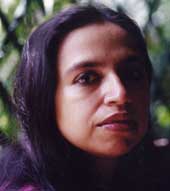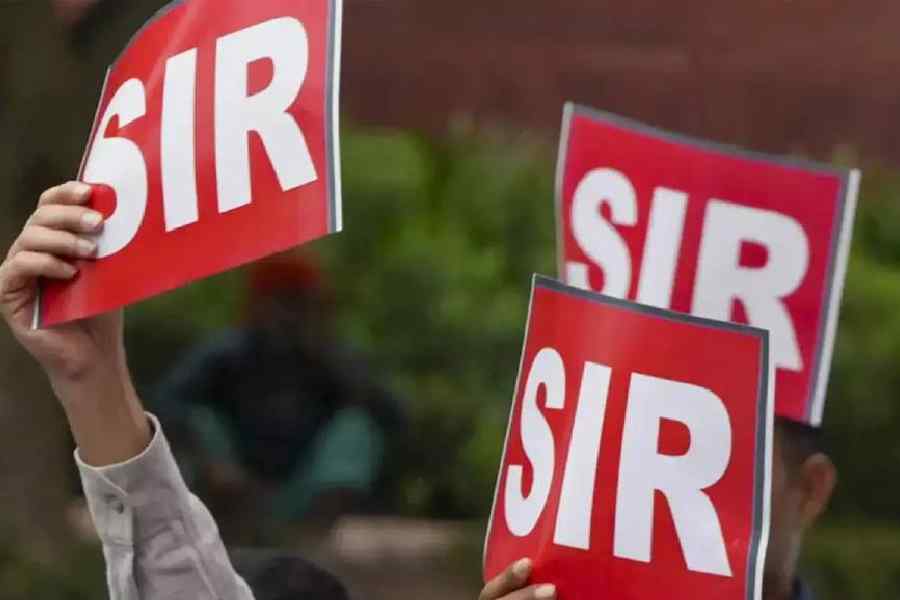 |
Life is not always a cake walk. It took Shonali Bose two years before her film, Amu, was screened in the United States. She may have wowed audiences in India — and has been the toast of the Toronto and Berlin International film festivals, but Bose’s film on a young non resident Indian finding her roots in the 1984 anti-Sikh violence that rocked India after the assassination of Indira Gandhi has run into every kind of nightmare a film-maker dreads.
The shoot was threatened, the Indian censor board wanted vital scenes deleted, financiers backed out, her Indian distributor was so convinced no one would want to see such a political film, they only wanted to take out one print. In America, Fox Searchlight wouldn’t even consider her film for distribution — their foreign film quota for the year was already filled with Deepa Mehta’s Water.
So what does a film-maker who wants to put all this behind her do? The sensible thing, says Shonali Bose, would have been to set her second film in Los Angeles where she is based with her scientist husband and two sons. But instead, she is heading right back into the hurly burly of shooting in India again. This time, her plans are even more ambitious. She is working on a film in Hindi — Chittagong Strike One — about the Chittagong armoury raid of 1930.
 |
 |
| FORGOTTEN HEROES: Surya Sen (top) and Pritilata Waddedar took on the mighty British empire |
“It’s a kick-ass period drama,” says Bose, sitting in a San Francisco café, across the street from the theatre where Amu is finally being screened. “If I did a film set in Los Angeles I would have shot it by now. But I can’t think practically. Chittagong is what I feel compelled to make,” says the 42-year-old director who studied history in Delhi’s Miranda House, and then went on to do film studies in L.A.
Bose is an animated speaker, scarcely drawing a breath between words, not even stopping to sip the cup of tea in front of her. She speaks with a passionate intensity as she recalls the story of schoolmaster Surya Sen and his band of young guerrillas, who took on the British Empire, raiding the Chittagong armoury of the police and auxiliary forces and declaring a provisional revolutionary government until many of them lost their lives in a standoff with the British in the battle of Jalalabad. The British put a price of Rs 10,000 on Surya Sen’s head and he was caught in 1933 and tortured and hanged in 1934.
Her interest in the subject was sparked by a conversation with her husband Bedabrata Pain, who is with NASA. They were talking about how Indian women were often depicted as passive in popular culture. “But think Pritilata Waddedar,” he told her. “She wasn’t passive.”
“I didn’t know who she was,” says Bose embarrassedly. “Two 16-year-old girls took on the British empire and they maybe got a few lines in our history books. I was shocked.” Soon she was devouring the story of Surya Sen, Pritilata Waddedar and Kalpana Dutt. There wasn’t much out there. She found one old Bengali film — Chattagram Astraghar Lunthan. She read every history book she could find but found a treasure trove of detail when she stumbled on Do and Die, a book written by senior journalist Manini Chatterjee, the daughter-in-law of Kalpana Dutt. Bose used the book as a reference to write the treatment with a co-writer from Mumbai.
Bose located the last survivor of the uprising — who was 14 when it happened. When she tracked him down, Subodh (Jhunku) Roy was 92 and toothless. She remembers him smiling into the camera, eyes glistening as he remembered the Battle of Jalalabad.
“As I faced the British bullets my mother’s face swam before my eyes — would I see her again?” he told Bose. She promised him she would tell his story for a new generation of youth. That was his last interview, possibly the only on-camera interview anyone ever recorded of Jhunku Roy. He died two weeks later, unheralded and unsung. “My promise to him has made this film a commitment beyond me,” says Bose.
Bose isn’t interested in any kind of flag-waving patriotism, though. Like Amu, Chittagong is also about state terror. With Amu, she found a slice of recent history that many Indians, including many Sikhs in the diaspora, were ready to bury and move on. Even younger members of her cast and crew were only vaguely aware of what had happened in 1984. But Bose was determined that young people should not forget their history.
Chittagong is also about not forgetting. “And I think it’s an easier sell than Amu,” says Bose. “It’s a real Rang de Basanti with teenaged heroes. When I narrated the story of Chittagong to young people working on Amu, they kept saying ‘This happened? This is true?’ I think there is a dearth of real stories.”
Bose is planning to make Chittagong as part of a trilogy and has been speaking to movers and shakers in Mumbai including Aditya Chopra and Vishal Bhardwaj about it. Actors such as Jaya Bachchan and Naseeruddin Shah have expressed interest in her project after seeing Amu.
While Amu had no well-known stars apart from Konkona Sen Sharma, Bose wants her new movie “to be a success with the mass Indian audience and for that you need star power. I am lucky the main men in the story are all in their thirties,” says Bose. It means she can think of actors such as Viveik Oberoi and Saif Ali Khan. She’s also narrated the story to Shah Rukh Khan, she says, and has caught the interest of Anil Kapoor. As for the teenaged girls, she is considering fresh faces but says she is “open” to all possibilities.
But would mall-going hip Indians in designer jeans really be interested in rebellious 17-year-olds who took on the empire almost a century ago? Bose thinks so. When she made Amu she was warned the new generation of India Inc. was quite apathetic.
“But the Amu screenings in schools blew me away,” says Bose. “Students from classes 8, 9, 10 came up and said, what can we do? I didn’t have an answer. I think the Chittagong story is bursting to be told. I don’t think India will be anymore portrayed as a country of passive women after that.”










